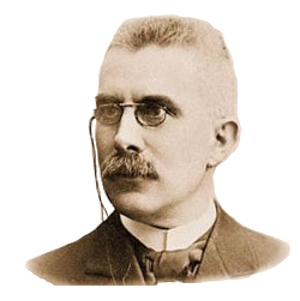Assisting Abiogenesis
March 16, 2015
Abiogenesis is the name given to the process by which
life arose from non-living
matter. Today, we have a greater understanding of how abiogenesis can happen, although the details of how it happened on
Earth are still a mystery. When
scientists are faced with mystery, they respond with
theories.
Panspermia is the theory that life was seeded on the Earth by
cosmic spores arriving on a lifeless Earth by the infall of things such as
comets. If you believe this theory, you still need to explain the abiogenesis that caused the original life. I wrote about abiogenesis in two previous articles (
Catalytic Abiogenesis, January 26, 2011, and
The Miller Experiment, July 30, 2014).
The idea of abiogenesis has been around for a long time. The
Roman author,
Ovid, retold a Greek myth about abiogenesis in his Metamorphoses. After Zeus destroyed Earth by a flood, Deucalion and Pyrrha were instructed by the goddess,
Themis, on a method to repopulate the Earth. Quoting Ovid,
Mota dea est sortemque dedit: 'discedite templo et velate caput cinctasque resolvite vestes ossaque post tergum magnae iactate parentis!'
The Goddess was moved, and gave this response: 'Depart from my temple, cover your heads, loosen your garments, and throw behind your backs the bones of your great mother!'[1]
After an initial confusion, the couple realized that their "great mother" was the Earth, and her bones were
stones. The stones they threw behind them became
people, Deucalion's stones became
men, and Pyrrha's stones became
women.

Deucalion and Pyrrha repopulating the Earth
Oil on canvas, circa 1635, by Giovanni Maria Bottalla (1613–1644), at the Museu Nacional de Belas Artes (Rio de Janeiro, Brazil).
(Via Wikimedia Commons.)
Darwin, himself, thought that early in the
long history of the Earth, self-replicating, living matter would have appeared in some "warm little pond."[2] As Darwin wrote in an 1871 letter to
botanist,
Joseph Hooker,[2]
"It is often said that all the conditions for the first production of a living organism are now present, which could ever have been present. But if (and oh! what a big if!) we could conceive in some warm little pond, with all sorts of ammonia and phosphoric salts, light, heat, electricity, &c., present, that a proteine compound was chemically formed ready to undergo stillmore complex changes, at the present day such matter would be instantly devoured or absorbed, which would not have been the case before living creatures were formed."
In a classic 1953
experiment,
Stanley Miller recreated a version of Darwin's "warm little pond" in his laboratory. Miller put
ammonia, methane, hydrogen and water, the supposed constituents of Earth's early atmosphere, into a closed
reaction vessel. He excited this mixture with artificial
lightning, producing amino acids, an essential building block for living organisms.
Amino acids are a good start, but they're still a long way from the complex chemicals of life. One way to produce a greater concentration of desired
chemical product is to start with concentrated
reactants. Beginning chemistry
students learn this as
Le Chatelier's principle, named after
French chemist,
Henry Louis Le Châtelier (1850-1936). This principle expresses the idea that products and reactants are in
equilibrium with each other, and adding more reactant will give more product.

French chemist, Henry Louis Le Châtelier (1850-1936)
One of my brothers, who was trained as a chemist, looks a lot like Le Châtelier, mustache included.
(Via Wikimedia Commons.)
Scientists concerned with the conditions for creation of life on Earth and other
planets, commonly called
exobiologists or astrobiologists, have considered possible mechanisms of how sufficient concentrations of the proper chemicals for abiogenesis could have appeared on the early Earth.
A recent paper in
Nature Chemistry by
biophysicists at the
Center for Nanoscience of the
Ludwig-Maximilians-Universität München (Munich, Germany) examines how
temperature gradients in water-filled
micropores in hot
rock may have provided a suitable
environment for the creation and cyclical replication of
nucleic acids.[3-4]
For comparatively simple
biomolecules to have had the opportunities to form stable, complex structures, such as those needed for storage and reproduction of
genetic information, there must have been some means of concentrating
precursor molecules in solution. The concentration of suitable compounds would have been very small in Earth's
primordial oceans.[4]
The team of Munich
physicists, led by
Dieter Braun, conducted
experiments in which they demonstrate that
seafloor pore systems, heated by
volcanic activity, could have been effective
reaction chambers for
RNA synthesis. Says Braun, "The key requirement is that the heat source be localized on one side of the elongated pore, so that the water on that side is significantly warmer than that on the other.”[4] The mechanism involved is
thermophoresis, in which
charged molecules will migrate from a warmer to a cooler region. The cooler regions are maintained at a lower temperature by the higher
thermal conductivity of the rock.[4]
The experiments
simulated such pores with
glass capillary tubes. Heated water containing dissolved fragments of DNA was allowed to travel into the tubes, where the fragments became trapped. Small molecules in the hot region are transported by
convection to the colder regions of the pores, where they encounter
complementary template molecules with which they can attach. In this way, the template strands can replicate. Replicated molecules can leave the pores in which they were made, and then colonize other pores.[3-4]

Capillary convection. (Illustration by the author using Inkscape.)
Strands of 75
nucleotides survived in the experiments, while strands half that length
decomposed. In this way, longer strands will predominate, and the pores become factories for creation of complex biomolecules.[3] As Dieter Braun explains,
“Life is fundamentally a thermodynamic non-equilibrium phenomenon. That is why the emergence of the first life-forms requires a local imbalance driven by an external energy source – for example, by a temperature difference imposed from outside the system... That this can be achieved in such a simple and elegant way was surprising even to us.”[4]
References:
- Ovid, "Metamorphoses," Book I, ll. 381-384; English translation.
- As quoted by Darwin's son, Francis, in The life and letters of Charles Darwin, 1887.
- Moritz Kreysing, Lorenz Keil, Simon Lanzmich, and Dieter Braun, "Heat flux across an open pore enables the continuous replication and selection of oligonucleotides towards increasing length," Nature Chemistry, Advanced Online Publication, January 26, 2015, doi:10.1038/nchem.2155.
- Labyrinths as crucibles of life, Ludwig-Maximilians-Universität München Press Release, January 27, 2015.
Permanent Link to this article
Linked Keywords: Abiogenesis; life; matter; Earth; scientist; theory; panspermia; cosmos; cosmic; spore; comet; Miller experiment; Roman Empire; Roman; author; Ovid; Greek mythology; myth; Metamorphoses; Zeus; Earth; Deucalion; Pyrrha; goddess; Themis; bone; stone; human; people; men; women; Giovanni Maria Bottalla (1613–1644); Museu Nacional de Belas Artes ( Rio de Janeiro, Brazil); Wikimedia Commons; Charles Darwin; geologic time scale; history of the Earth; botany; botanist; Joseph Dalton Hooker; ammonia; phosphate; phosphoric salt; light; heat; electricity; protein; chemical compound; chemical reaction; experiment; Stanley Miller; laboratory; methane; hydrogen; water; atmosphere of Earth; chemical reactor; reaction vessel; lightning; amino acid; concentration; chemical product; reagent; reactant; student; Le Chatelier's principle; French; chemist; Henry Louis Le Châtelier (1850-1936); chemical equilibrium; moustache; mustache; scientist; planet; astrobiology; exobiologist; astrobiologist; Nature Chemistry; biophysics; biophysicist; Center for Nanoscience; Ludwig-Maximilians-Universität München (Munich, Germany); temperature gradient; microporous material; micropore; rock; environment; nucleic acid; biomolecule; gene; genetic; information; precursor; molecule; primordial; oceans; physicist; Dieter Braun; experiment; seabed; seafloor; volcano; volcanic; reaction chamber; transcription; RNA synthesis; thermophoresis; electric charge; thermal conductivity; simulation; simulate; glass; capillary action; capillary; convection; complementarity; complementary template molecules; Inkscape; nucleotide; chemical decomposition; decompose; thermodynamic equilibrium; energy.